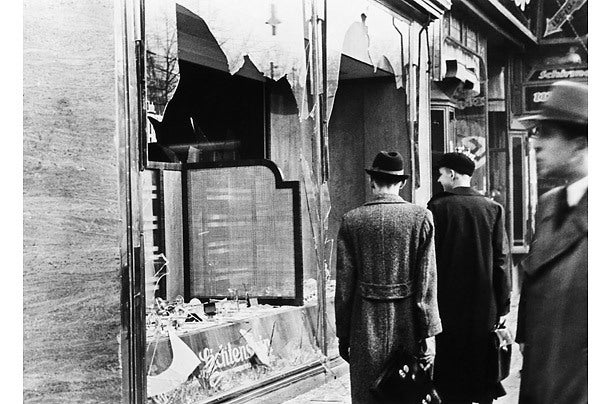
Kristallnacht
On November 10th seventy-eight years ago, Germans woke up to the news of rioting: Hitler’s thuggish SA troupes had smashed Jewish storefronts and burned down synagogues all over Germany. This was the national pogram that would later become known as Kristallnacht.
The rioting did not come out of nowhere. But neither was it a spontaneous eruption of anti-semitic public sentiment. It was a result of an over-simplifying, truth-be-damned leadership, manipulating the frustration, perceived victimhood, and anger of many, especially working class, Germans.
In many ways, it was the beginning of the Holocaust. But it was also the culmination of a series of complicated international events.
Four days earlier, a young Polish Jew named Herschel Grynszpan walked into the German Embassy in Paris and shot a midlevel German diplomat named Ernst vom Rath. Vom Rath was a relative nobody; Grynszpan was an angry, grieving 17 year old. He was acting out against the devastating deportation of his family from Germany. Poland had recently rescinded the citizenship of all Polish Jews living in Germany. Not wanting to allow these immigrants, who were already seen by embattled, working class Germans as competition for jobs and resources, to become permanent residents, the Nazis reacted by ordering their deportation immediately.
The Grynszpan family was among the approximately 17,000 Jews sent to the border of Poland, where they huddled in refugee camps-- exiled from one land, barred entry from another. And living with an uncle in Paris, seventeen year old Herschel bought a gun. If there was anything besides Grynszpan’s personal turmoil that caused vom Rath’s assassination, it was the complicated trickle-down cause and effect of national policy. And the early throes of a more global economy.
But that was not what Goebbels and Hitler were interested in. They were interested in the simple story of a German assassinated by a Jew. And playing on the anti-immigrant sentiment as much as the anti-semitism of disenfranchised Germans, they peddled this to great effect: Grynszpan was possibly part of a vast conspiracy, and Germans would be menaced by more random acts of terror if they didn’t eradicate the “other” from their society.
To many Germans, this flash of violence came as an ugly surprise-- a jarring wake-up call. Some made their reproval public, but more kept their heads down and looked the other way. A few began to organize resistance to this new Nazi government that was led by a man with no regard for facts or recognition of complexity.
But for a good portion of the populace, the simple story Hitler and Goebbels had crafted of vom Rath’s assassination was appealing, especially to the beleaguered, disenfranchised masses whose quality of life had never recovered from WWI. The narrative of the violent and radical “other” leap-frogged over the role of geo-political forces that required education and time to understand. It offered, in the form of Jews and Immigrants and outsiders in general, a tangible, human enemy. And the simplicity of this reduction was compelling: they did not need to empathize with others or grasp the complexities of their country’s economic situation and political turmoil. And in Hitler they saw a strongman who could restore Germany’s greatness. He assured the populace he had answers to the challenges they were faced with, and they believed him.
